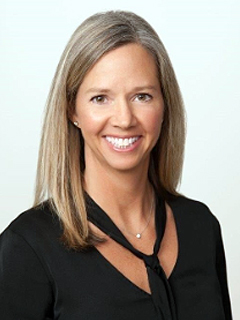Raising the bar: IPO insights to build a winning deal story
Spring 2023 edition

Taking a company public can boost its profile and provide much needed resources. But ensuring capital markets readiness requires a keen understanding of the current IPO market, including recent trends, rising sectors, and significant exits.
Raising the bar: IPO Insights to build a winning deal story delivers the latest information and analysis on quarterly IPO activity and performance from the KPMG Capital Markets Readiness and KPMG Private Enterprise practices.
Bigger is better
When investors lack confidence—as in the current IPO market—they look for big, established companies with a track record of profitability. While 1Q23 didn’t feature many large deals, those that did debut this quarter were generally met with enthusiastic support.
Although only eight deals came in at over $100 million, half of those enjoyed positive returns over the quarter. The largest deal, Nextracker, raised $638 million and then delivered a 30 percent return in the quarter, while Structure Therapeutics’ $161 million deal returned nearly 52 percent.
Yet that does not mean that the IPO markets have reopened. 1Q23 activity was up over last quarter (23 deals versus 7), proceeds raised were also up ($2.2 billion in total for Q1’23 compared to $1.3B in Q4’22) and PE finally returned to the market. But that is coming off one of the worst quarters in decades. So, some very slight progress but a long, long road to get back to anything “normal”.
Highlights of 1Q23
- 1Q23 saw just 23 IPOs(1), raising a combined $2.2 billion
- Investors gravitated towards listings of larger, profitable companies
- PE returned to the market; together with VC, backed 7 of the 8 largest deals this quarter
- Energy-related issues led the leaderboard for proceeds raised
Footnote
1. IPOs and direct listings with a market cap of at least $50mm; excludes closed-end funds, unit offerings, and SPACs.
Everyone is waiting for the Big One to come to market—the big billion-dollar offering that kicks the IPO window wide open. I think what we are going to see is a series of large deals (but perhaps not billion-dollar ones) that, together, will drive investor confidence and pave the way for other issuers to bring their companies to market. The big unknown however is the ‘when’….
Conor Moore
Partner, Americas leader, KPMG Private Enterprise
US IPO Activity - Quarterly
Energizing the market
Rising energy prices, supportive legislation and demand for greener assets drove energy-related IPOs to the top of the proceeds leaderboard. Nextracker makes solar equipment. The second largest issuer, Atlas Energy Solutions, is a frac sand miner that raised $324 million. Enlight Renewable Energy, which raised $252 million, operates wind and solar farms.
Healthcare stocks led in terms of average returns, but almost wholly on the back of one smaller ($15 million) deal brought by Genelux, a biotech company that returned 400 percent in the quarter. Technology stocks, nearly entirely comprised of small-cap and foreign issuers, delivered some of the worst average returns as investors rushed towards sectors with larger deals and clear profitability.
US IPO Returns - Average 1Q 2023 Returns by Sector
Welcome back PE
Although PE and VC activity remains weak in comparison to past years, the return of PE after four inactive quarters is a positive sign. PE and VC were behind seven of the eight large deals this quarter. They also backed four of the five best-performing IPOs, providing VC with an 8 percent overall average return and PE with a 16 percent return. Many hope this will help build the confidence to unlock bigger deals going forward.
US IPO Activity – Venture Capital
US IPO Activity – Private Equity
While the IPO window remains closed, private company leaders should be preparing their organizations for the rigor and requirements of being a public company. Once the IPO window opens, you don’t want to trip out of the gate or be forced to price at the low end due to concerns about your reporting. Use this time wisely.
Shari Mager
Partner, U.S. National Leader, Capital Markets Readiness, KPMG US
Future trends
Biding time
In 2021, there were a number of companies that thought their next round of financing would come from the public markets. Then the window slammed shut. They reduced headcount, improved efficiency, and held on rather than sell at a discount or accept a significant down-round of funding.
The companies that are truly ready for an IPO should be able to find bridge-funding options to carry them through to the eventual opening of the markets. Those that can’t need to take a closer look at how they can improve their capital markets readiness. That, in turn, should help investors see their future value.
Outlook for 2Q23
While many hoped for a 2Q reopening of the IPO window, recent market turmoil has put a damper on those expectations. As in 1Q, investors will be looking for established companies with proven profitability. That will likely place focus on sectors like industrials and energy.
Investors are looking for good news to cheer. But it will take something monumental—like an end to the war in Ukraine or a drop in central bank lending rates—to force the window open any time soon.
How we can help
Understanding key trends and investor expectations is critical to preparing for an IPO. Investment narratives matter. They cut through the deluge of data and analysis, and help companies sift real windows of opportunity from market noise. And the most compelling deal stories come from insights about a company’s unique mix of valuation drivers. Sector. Markets. Customers. Portfolio mix. Capital structure.
At KPMG LLP (KPMG), our professionals offer a range of services specifically designed to help privately owned companies navigate each stage of the IPO journey. We use our deep knowledge of markets and the ecosystem to help entrepreneurial ventures simplify the complex challenges of going public, while helping ensure they meet their diverse regulatory, compliance, and reporting requirements.
Working with KPMG, you gain access to trusted advisors who share your entrepreneurial mindset. And we can help you understand and improve the factors that drive maximum deal value for your offering.
Source (for all market commentary and data cited on this page): KPMG, US Equity Capital Markets Update, Q1’23, May 2023
Source for US IPO Activity - Private Enterprise View: Renaissance capital
Explore more
Meet our team


